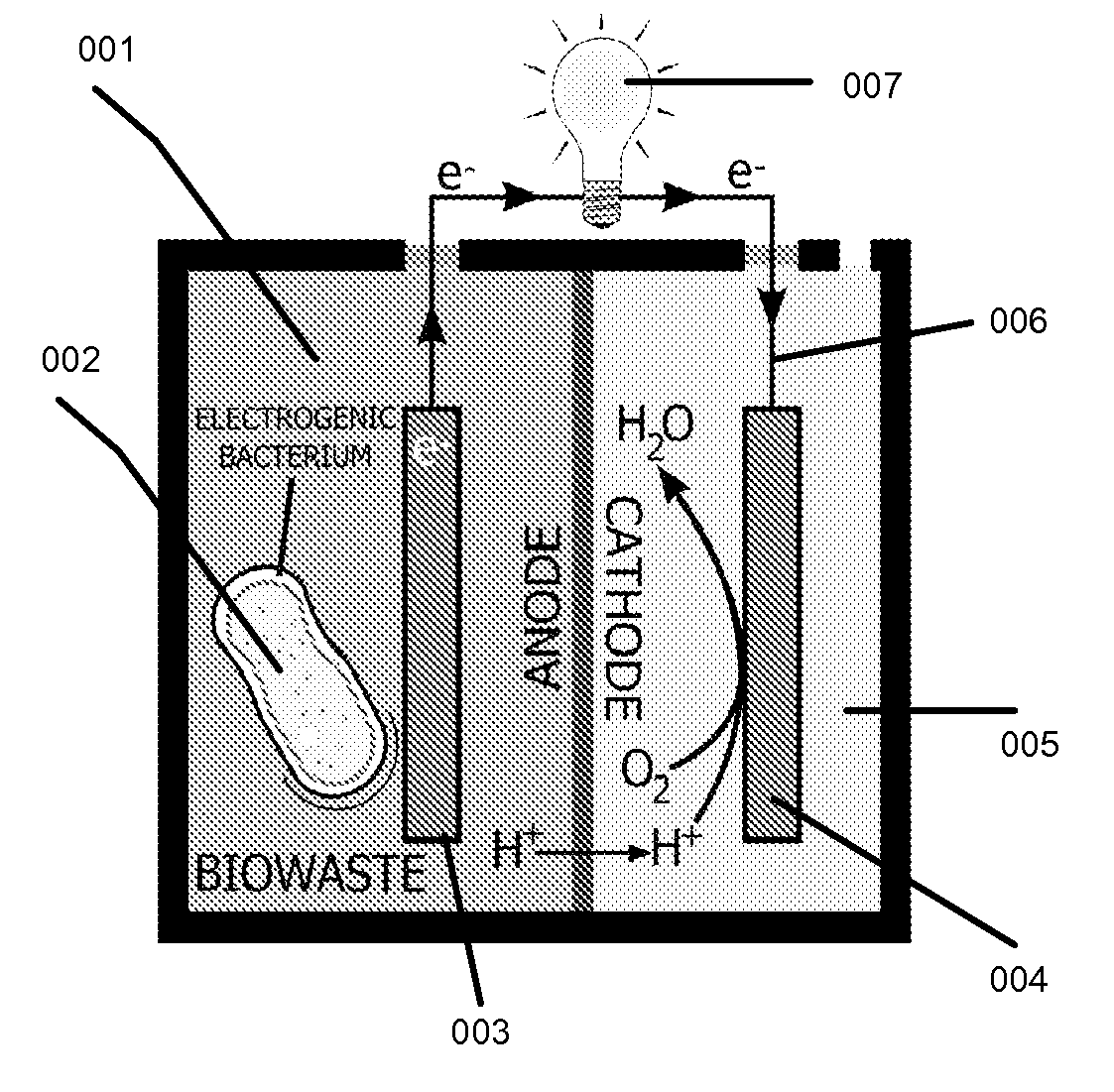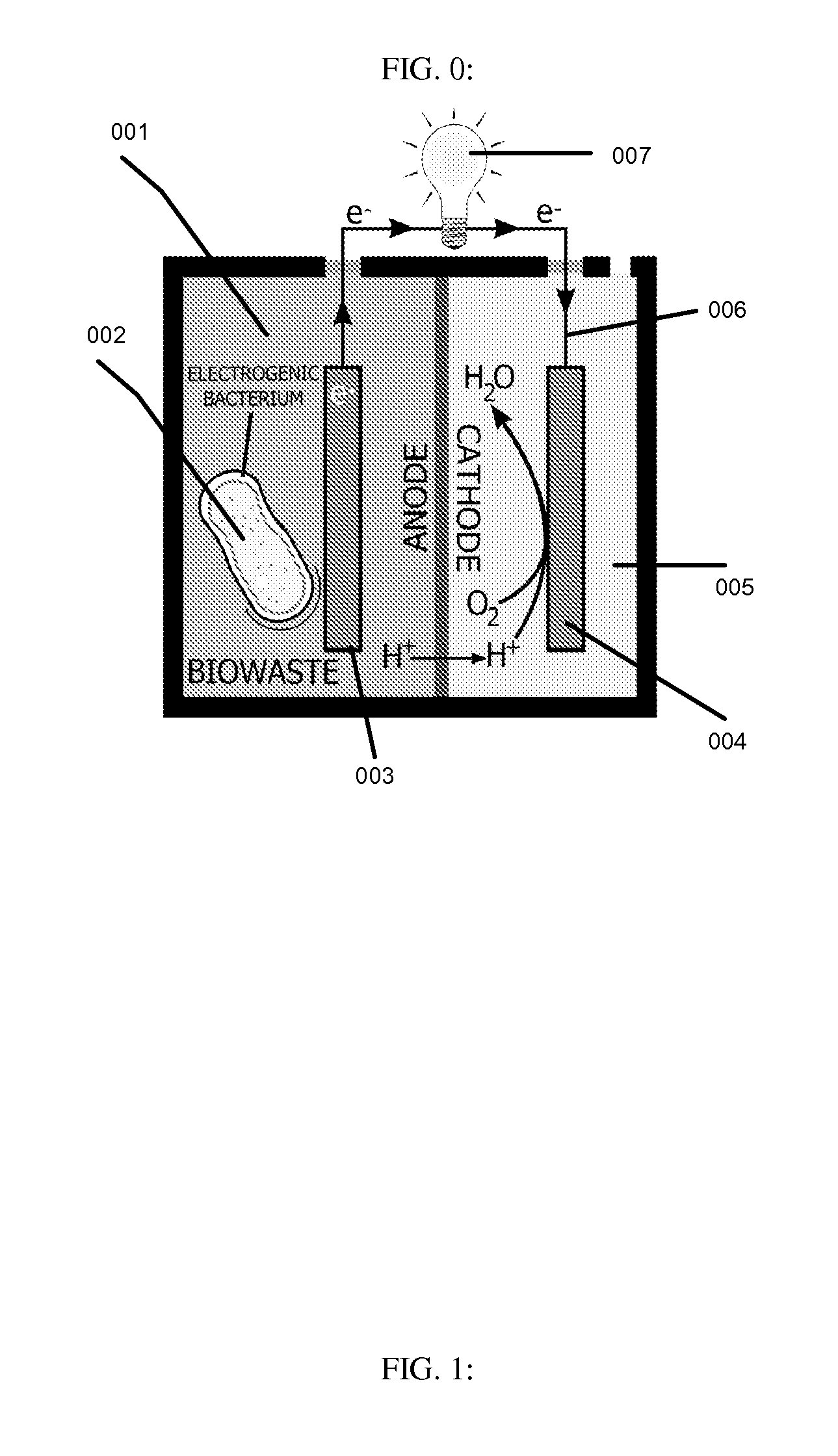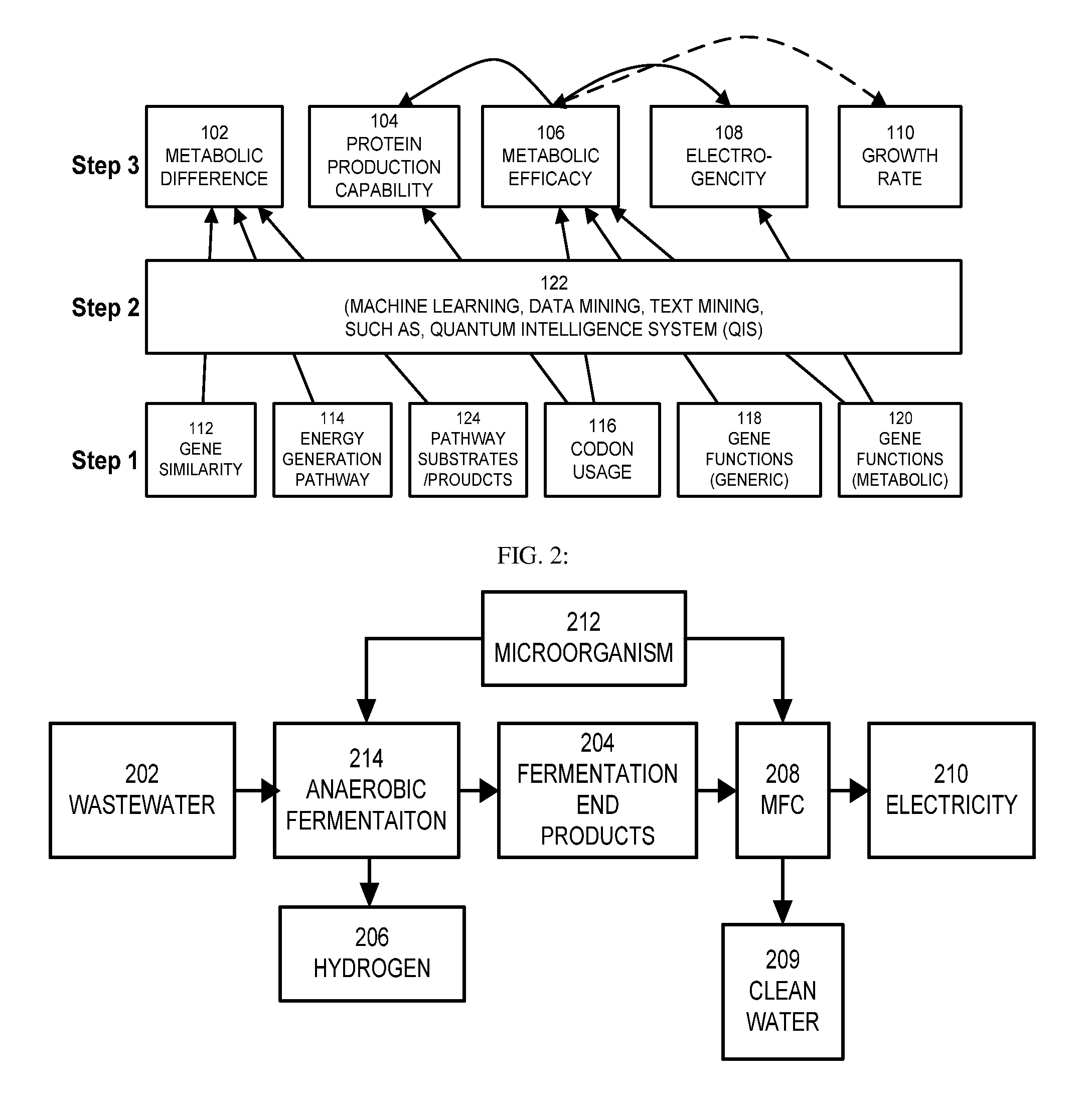Using knowledge pattern search and learning for selecting microorganisms
a knowledge pattern and microorganism technology, applied in the field of metabolic reaction networks, can solve the problems of increasing water pollution, increasing the maintenance cost of long-term operation, and large electricity consumption of treatment systems, so as to achieve maximum efficiency, minimal environmental impact, and recover clean energy
- Summary
- Abstract
- Description
- Claims
- Application Information
AI Technical Summary
Benefits of technology
Problems solved by technology
Method used
Image
Examples
application example 1
[0045] The system can be installed on a ship, such as, a military ship or a commercial ship to processing the wastewaters on the ship. It cleans the water and also generates hydrogen, electricity, or methane to be used on the ship.
application example 2
[0046] The system can be installed at a sugar plant, a brewery, a winery, a dairy, or beverage plants to process their wastewaters. These wastewaters contain higher sugar, grain, carbohydrates and other organic substances for energy to be extracted using this invention. In U.S. alone, there are about 24,000 such factories which will need wastewater treatments or recycles.
application example 3
[0047] The system can be installed on a site of municipal wastewater treatment facilities to clean the water and generate clean energy to cover current expensive aerating process.
PUM
 Login to View More
Login to View More Abstract
Description
Claims
Application Information
 Login to View More
Login to View More - R&D
- Intellectual Property
- Life Sciences
- Materials
- Tech Scout
- Unparalleled Data Quality
- Higher Quality Content
- 60% Fewer Hallucinations
Browse by: Latest US Patents, China's latest patents, Technical Efficacy Thesaurus, Application Domain, Technology Topic, Popular Technical Reports.
© 2025 PatSnap. All rights reserved.Legal|Privacy policy|Modern Slavery Act Transparency Statement|Sitemap|About US| Contact US: help@patsnap.com



